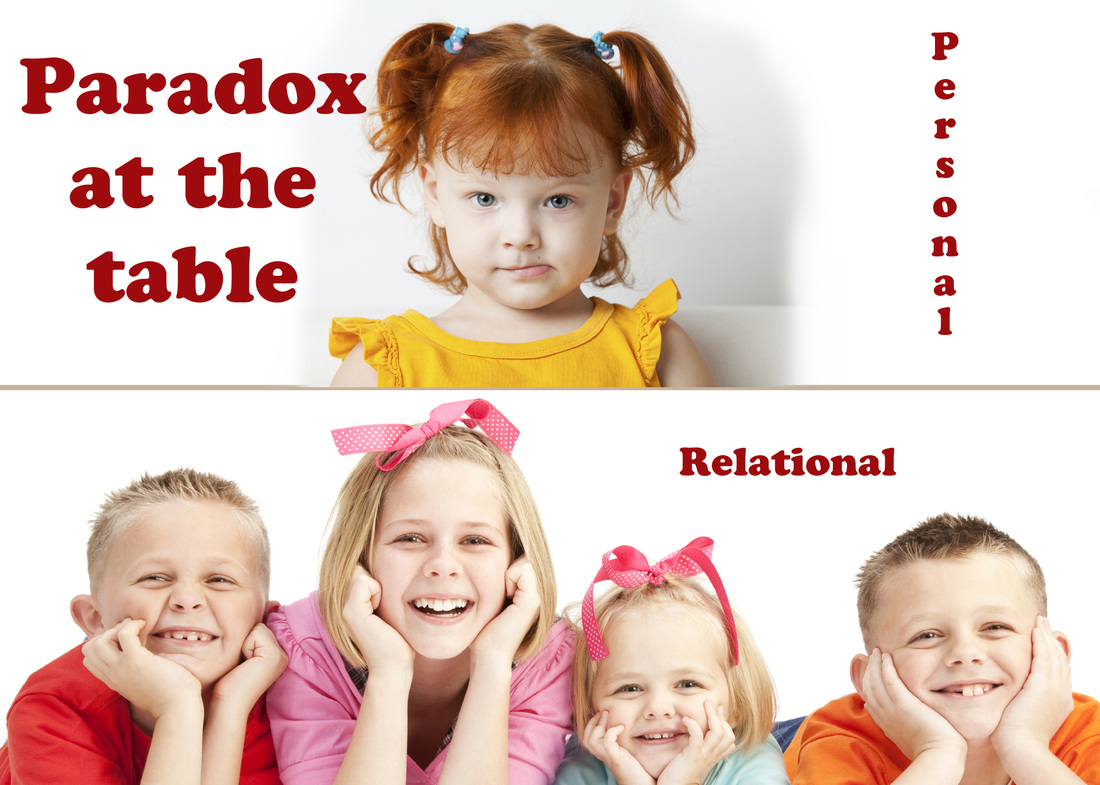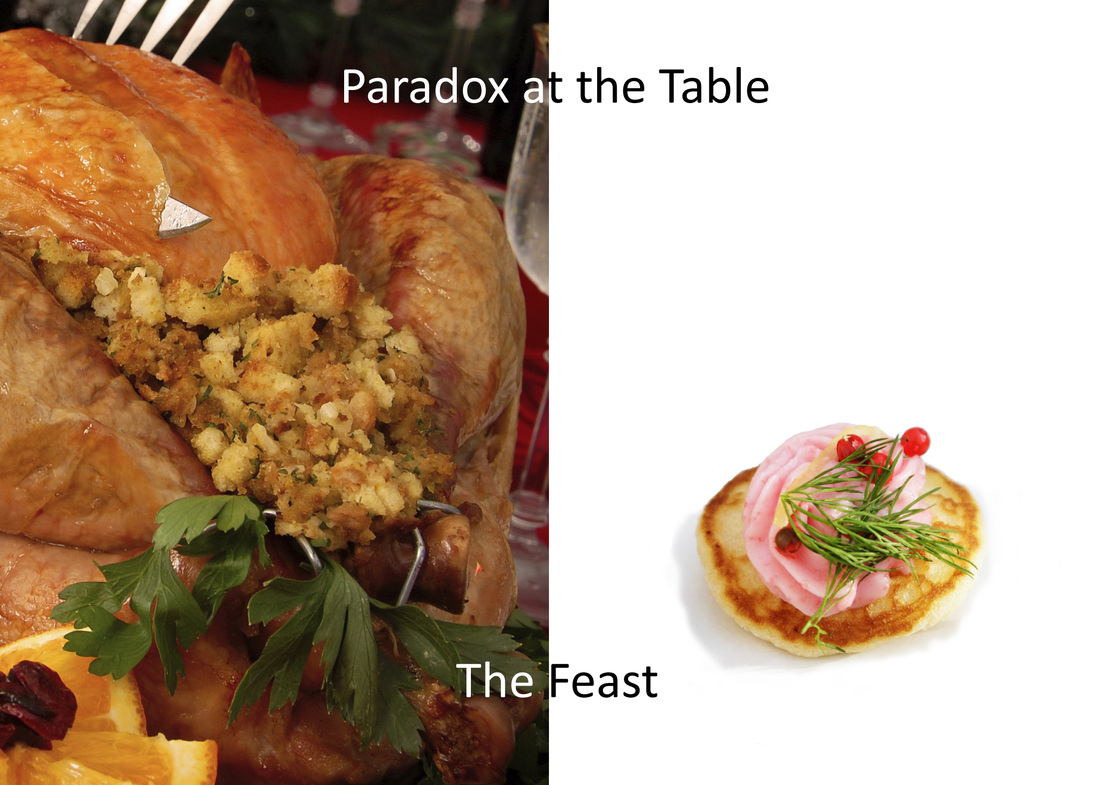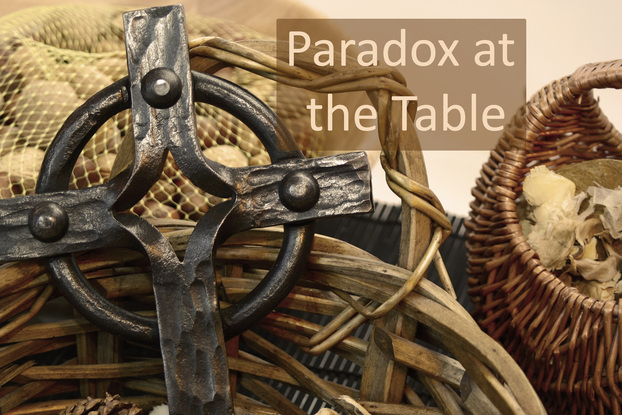(This meditation is the second of a series regarding the communion table) What does it mean that the communion table is a place where we can privately share a moment with God while also participating in a community event? How do we resolve this apparent contradiction?
We are, as individuals, invited to the communion table. There is no one just like you. You are unique. We are not Stepford wives: there is no perfect way to be or a perfect way to look. There is beauty to be found in our individuality. We can see individual change in biblical heroes like Moses. He was a prince of Egypt and had individual experiences with God through mountain experiences and a burning bush. We can also see individual invitation through great minds outside of the bible: Augustine and his sermons. Martin Luther and his list nailed to a church door. Karl Barth and perfect grace. At the same time we are invited as a community to the communion table. Many communion tables are set up where we are like pupils sitting before the great teacher God. Communion table is up front while we all sit at our pews or desks waiting for the lesson. Conversly, Jesus first established communion to be more like the Knights of the Round Table. We are in relationship, and can see everyone we are communing with. We can understand community invitation when we recall the Israelite journey in the wilderness, Jonah and the Ninivites, and the call of the Disciples. Outside of the bible we can see the power of the community throughout history. There were the Newsies, a group of kids who were not being paid a fair wage. For a brief moment in history they worked together to gain fair wages. Then there is Martin Luther King Jr and his sit ins. The civil rights movement was won due to the pacifist gatherings of King's followers. We can resolve this contradiction because of a symbol Paul gave to the Corinthians nearly 2,000 years ago: The body of Christ. A human body is both made of individual parts and at the same time is one. We can put our focus on either the parts or the whole body but we would be missing half the story. God loves our unique individuality and God loves when we can work together moving mountains. Harmony comes from knowing both of the above ideas are true. The community is better when individuals care for themselves, and a person cannot truly be whole without the help of others. The table reminds us how impossible it is to choose individual or community. I am an individual within the community. The community is full of individuals. Next week: How do we resolve the health of the table? How is the table both broken and whole at the same time? (This meditation is the first of a series regarding the communion table) The draw of the table appears to be a paradox. We are called to be participants, feasting in communion, and we are called away to be messengers for others. These two items appear to be contradiction to one another. How do we understand this apparent contradiction as worshiping believers?
First of all, Jesus was a celebrator of food. Meals were like glue for him, binding people together in conversation. When Zacchaeus, the tax collector, was up in a tree, just for the chance to see Jesus, it was Jesus who turned the situation around. He wanted to go to his house and share a meal. Jesus' first miracle took place during a wedding celebration. Jesus, on more than one occasion, ate at Mary, Martha, and Lazarus' house. It is no wonder the biggest metaphor he leaves with us is the communion table. Yet, this celebration is not a gluttonous event. It is not Valhalla. In fact, when we are invited to the table the message once we get there is "go." "Go to the people of all nations and make them my disciples. Baptize them in the name of the Father, the Son, and the Holy Spirit" (Matt 28:19) Jesus asks Peter if he loved him. Peter three times says he does and three times Jesus tells Peter in different ways, "Feed my sheep." The paradox is resolved because the opposing force of the table is set like magnetic poles. It turns the table into an electromagnet, intensifying the connection between us and God. We are both drawn to and pulled away from it because that is how the symbol of communion is powered. If either the pull or the draw ceases to exist the power escapes the table. Next week: The paradox of relation. How is the communion table both a personal and group experience? 1 Corinthians 11:23-26 CEB The Christian Church, (Disciple of Christ) denomination is a church of the table. Every time we gather as a worshiping body of believers we have communion. In the bible it sits as book ends on either side of Lent.
Lent comes from the Catholic tradition. It is the forty days leading up to Easter. It is often tied to the wilderness time of the Israelites and Jesus. Lent begins with the ashes of the previous Palm Sunday. (Palm Sunday is the Sunday in the Christian Calendar where we celebrate Jesus' entrance into Jerusalem days before he would be crucified. In traditional churches the Palms are kept, dried and burned into ashes for the next Ash Wednesday.) If this is the first time learning about these events you probably heard of Mardi Gras. Mardi Gras, also known as Fat Tuesday, is traditionally the opportunity to use the fat in the house before the fast that is lent. Traditionally the fat and yeast is used to make pancakes. Now most know it as a crazy celebration in New Orleans. This all ties into the communion table. Jesus loved illustrations. Early in my Christian life I was drawn into the narrative style Jesus used to explain simple and complex truths. Sheep. Goats. Vineyards. Wheat. Food. Now, 2,000 years disconnected from the stories, we lose how relational those stories were. Jesus used objects and stories people came in contact with all the time. The biggest illustration happened around a meal. Perhaps the customs are different, but everyone needs to eat. Food is universal. Such a simple meal packed with meaning. Many great books have been written about communion. As short and sweet the words about communion are there is so much one can say about them. I would like to talk about is the apparent paradox. As a lenten series I am going to spend the next few weeks discussing the table. How is it that we are drawn to and away from it? How can the table be for just us and for everyone at the same time? How is the event both broken and whole simultaneously? Is this a meal or a sacrifice? How is it both? How is this both a spiritual and physical event? So today, as a way to prepare yourselves for the upcoming weeks, ask yourselves those questions. What does the table mean to you? |
Categories
All
Archives
October 2023
|






 RSS Feed
RSS Feed